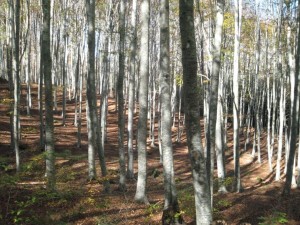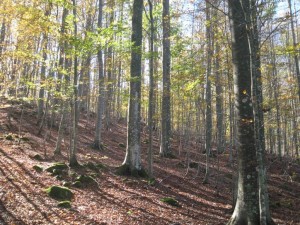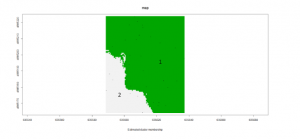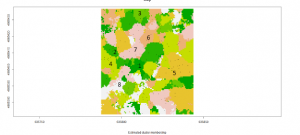Influence of Forest Management Systems on Genetic Diversity: A Case Study From Italy
For his Master’s thesis, Daniele Mateucci analyzed the genetic structure of two beech stands in Tuscan Apennines, Italy. His study finds that different forest management systems may have an influence on the genetic diversity of forests. Find out how the single-tree selection system seems to promote gene flow and increase genetic diversity in his blog.
In Italy, beech forests are usually managed with the regular shelterwood system, but some owners in central and southern Apennines choose another forest management system – the single-tree selection system. The silvicultural tradition always suggests the first system (regular shelterwood) as optimal for its tendency to make even aged stands and to obtain high quality wood. On the other hand, a single-tree or group selection system is suggested for the less fertile beech stands or the multi-species stands. It is thus important to understand, from a viewpoint of sustainable forest management, the relationships between these two different forest management systems and genetic diversity in beech (Fagus sylvatica L.) forests.
The target area of this survey is the Pian degli Ontani Biogenetic Nature Reserve (Pistoia) in the Tuscan Apennines, where both kinds of forest management system are used. The beech stand managed with the regular shelterwood system is publicly owned and managed by the Italian National Forest Service. It is harvested in 120 years intervals with a series of cuts (Fig.1). The single tree selection system managed stand, “Bosco di Baldo”, is private and has an uneven-aged structure (Fig.2). Mr. Baldo, the owner, cuts the trees with four or five generations of seedlings beneath in short intervals, usually each five or six years or less, leaving the snags in order to help natural regeneration. In each stand, sampling area (50 m x 50 m) was marked and the position of each tree with a diameter more than 5 cm was recorded. For each tree some dormant buds or bark were sampled to isolate the DNA.
The genetic analysis by specific microsatellites (SSR) showed that the silvicultural system influenced the spatial patterns of genetic variation rather than the genetic diversity because the index of expected heterozigosity and number of alleles at any given SSR locus were both high without significant differences. Moreover, in Bosco di Baldo, the mean number of rare alleles (Nrar=10,2) was higher than in the even age stand, (Nrar=5) and even than that observed in an old-growth beech forest in the central Appennine such as Fonte Novello in Abruzzo (Nrar=7) and Sasso Fratino in Tuscany (Nrar=9). Genetic population structure analysed with GENELAD software showed eight clusters in the uneven aged stand and only two clusters in the even aged stand (Fig.4). Furthermore, the spatial distribution of each cluster is more heterogeneous in Bosco di Baldo, the uneven aged stand (Fig.3). In Bosco di Baldo, the inbreeding coefficient between different clusters showed that the gene flow was high and a permanent family structure.
Results point to the conclusion that the higher number of rare alleles is due to the differences in forest management systems. Single-tree selection system seems to cause the break of the family structure, promoting the gene flow and the genetic recombination between trees of different families, which are not related to each other.
Author: Daniele Mateucci, University of Florence
Disclaimer: the views expressed in the article are those of the author and do not necessarily represent or reflect the views of LIFEGENMON
















 Saving...
Saving...
Leave a Comment